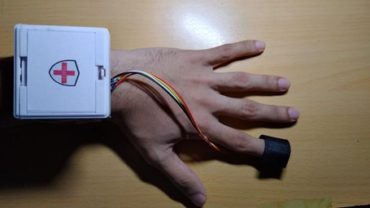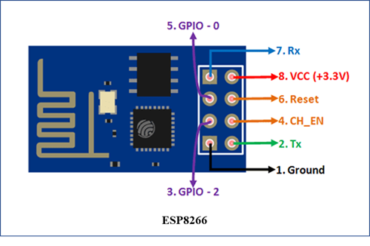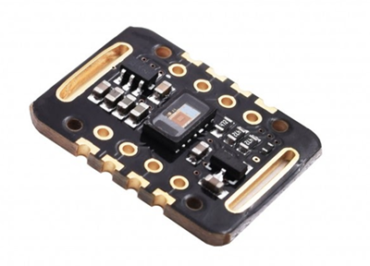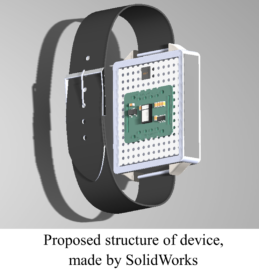An IoT empowered system for Patient Monitoring and Diagnosing
Content by:- Raveen De Silva | Written by:- Damian Jayatunga
Coronavirus disease 2019(COVID-19), is a global pandemic that creates many challenges to almost every stream in the world. In the early stage of the COVID-19 pandemic, specialists revealed that only way to break the infection chain is through self-isolation, physical distancing, and proper sanitization. When monitoring a large number of patients by maintaining physical distancing and self-isolation, it became a huge trouble to the health sector. In this article, we are discussing a low-cost IoT-empowered patient monitoring system specially designed for medical professionals to consistently monitor patients which would be a solution for the above challenge. The following project was done by Sajitha Aldeniya, Sahan Hettiarachchi, Nuwan Abeynayake, Raveen De Silva for the competition SLIOT 2020 in which the team scorpion appeared as finalists.

Proposed IoT device
Here we propose a potential application of the Internet of Things (IoT) for mass patient surveillance and diagnosing to help both semi-trained and expert medical professionals to consistently monitor patients while wearing personal protective equipment or maintaining a safe distance from the patients. The proposed framework consists of wearable and low-cost IoT node, a smartphone application (app) and a web application (web) for data analysis and individual patient monitoring. The low power IoT node is designed to track defined critical health parameters, including body temperature, heart rate and blood oxygen saturation. Then, those acquired data, are fed to the app and the web in real-time via the used cloud storage. The consistent updates from the node can be visually analyzed and diagnosed by the healthcare professionals through the app and the web for each individual patient.
The proposed app or web can be utilized as a control point for the devices and hence, minimizing further the exposure risk to COVID-19 of the healthcare personnel. In addition, the IoT node is designed such that it can be easily sanitized. It is observed that the performance of the proposed device could significantly be improved by enhancing the sensing capabilities of the node and by integrating artificial intelligence back-end to the web application. Therefore, it is evident to state that the proposed patient monitoring and diagnosing device can become a game changer in mass monitoring of the patients, in pandemics like COVID-19, especially in resource-constrained environments.
The following figure shows the control system of this device.

Subparts
1. ESP8266
ESP8266 is a Wi-Fi SOC (system on a chip) produced by Espressif Systems. It is a highly integrated chip designed to provide full internet connectivity in a small package. The ESP8266 is a low-cost Wi-Fi microchip, with built-in TCP/IP networking software, and microcontroller capability, produced by Espressif Systems in Shanghai, China. The chip first came to the attention of Western makers in August 2014 with the ESP-01 module made by a third-party manufacturer, Ai-Thinker. This small module allows microcontrollers to connect to a Wi-Fi network and make simple TCP/IP connections using Hayes-style commands.
For the compact use and size reduction needed in the PMDD device, we used only the Wi-Fi module in this device.

-
- 3V3 : – 3.3 V Power Pin.
- GND: – Ground Pin.
- RST : – Active Low Reset Pin.
- EN : – Active High Enable Pin.
- TX : – Serial Transmit Pin of UART.
- RX : – Serial Receive Pin of UART.
- GPIO0 & GPIO2: – General Purpose I/O Pins. Also known as TX/RX pins are used for Programming the module or for serial I/O purposes.
2. Max 30102

The MAX30102 is a combined pulse oximetry and heart rate sensor interface designed for small wearables or personal health monitoring devices. Compared to other components on the market, the MAX30102 is the first to integrate the following features and components into a single package with a small SMD footprint:
- DSP block for processing heart rate and pulse oximetry signals.
- LED driver block, red/IR LED, and sensor on-die with cover glass integrated into the package.
- Integrated FIFO memory block for storing and providing readings to an external processor via an I2C bus interface.
- Adjustable SpO2 range and sample rate control.
- Integrated temperature sensing and a compensation circuit.
- Ambient light filtering and compensation.
Although primarily intended for personal health monitoring, the device can interface with any standard processor via its I2C bus interface. The use of I2C in this component is advantageous, as it helps minimize the total circuit footprint by eliminating the need for additional passives for configuration. Other possible uses include PDAs, tablets, and smartphones.
The image below shows the package outline and a typical application circuit from the MAX30102 datasheet. The diagram shows that minimal external hardware (only 3 resistors and 4 capacitors) required to interface and connect the MAX30102 to an external processor.

The MAX30102 datasheet lists the core specifications and data format used in the internal registry to read/write data and configure the device;
| Input voltage | : | 1.7 to 2.0 V |
| LED voltage | : | 3.1 to 5.0 V |
| LED characteristics | : | 880 nm (IR) or 660 nm (red) emission with 30 nm and 20 nm FWHM, respectively |
| Rated SNR | : | Up to 89 dB |
| Analog interface | : | 16-bit ADC |
| Packaging | : | OLGA/14 |

PCB Design and Powering
PMDD PCB is a two-layer PCB, with components mounted on both sides. Because of space limitations, the PCB only consists of components needed for ESP8266 to safely operate. The PCB is designed to operate in low power mode efficiently. To achieve this, we use multiple technics. One of such is the selection of a low quiescent current LDO voltage regulator to regulate the battery voltage. Here we used the MCP1700 regulator, and in our design, the MAX30102 sensor can be switched OFF in low power mode. Which increases the efficiency of our design in low power mode.

Communication protocol explanation MQTT
Why should we use MQTT in this design ?
- Lightweight and Efficient.
Since MQTT clients are very small and require minimal resources, MQTT can be used on small microcontrollers. MQTT message headers are also small to optimize network bandwidth.
- Bi-directional Communications
Since MQTT allows device to cloud and cloud to device messaging, broadcasting messages to groups of things makes easy.
- Scale to Millions of Things.
MQTT has the ability to be scaled to connect with millions of IoT devices.
- Reliable Message Delivery
MQTT has 3 defined quality of service levels: 0 – at most once, 1- at least once, 2 – exactly once, to provide reliable message delivery.
- Support for Unreliable Networks
Many IoT devices connect over unreliable cellular networks. MQTT’s support for persistent sessions reduces the time to reconnect the client with the broker.
- Security Enabled.
MQTT enable message encrypting using TLS and uses modern authentication protocols, such as OAuth to authenticate clients.

